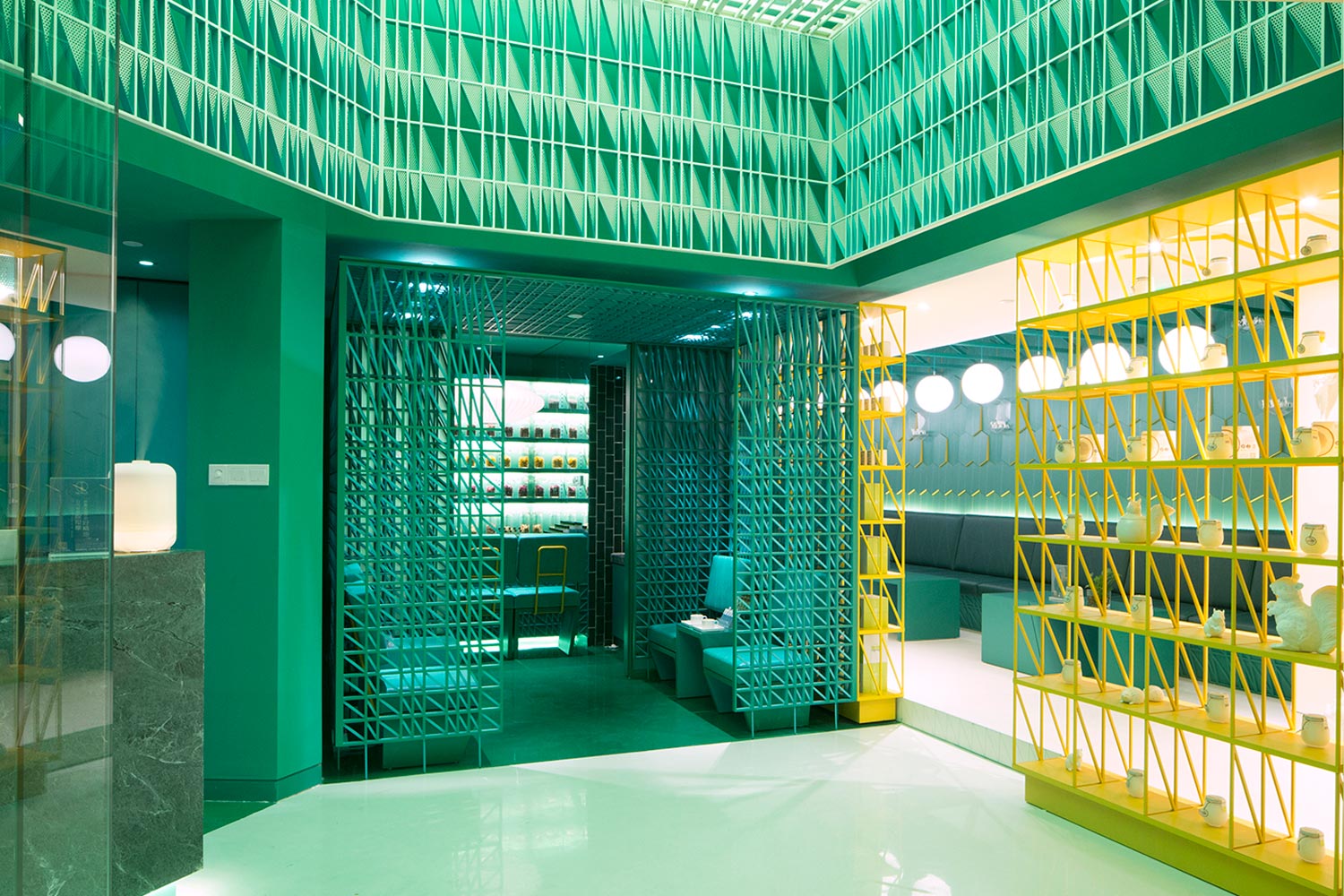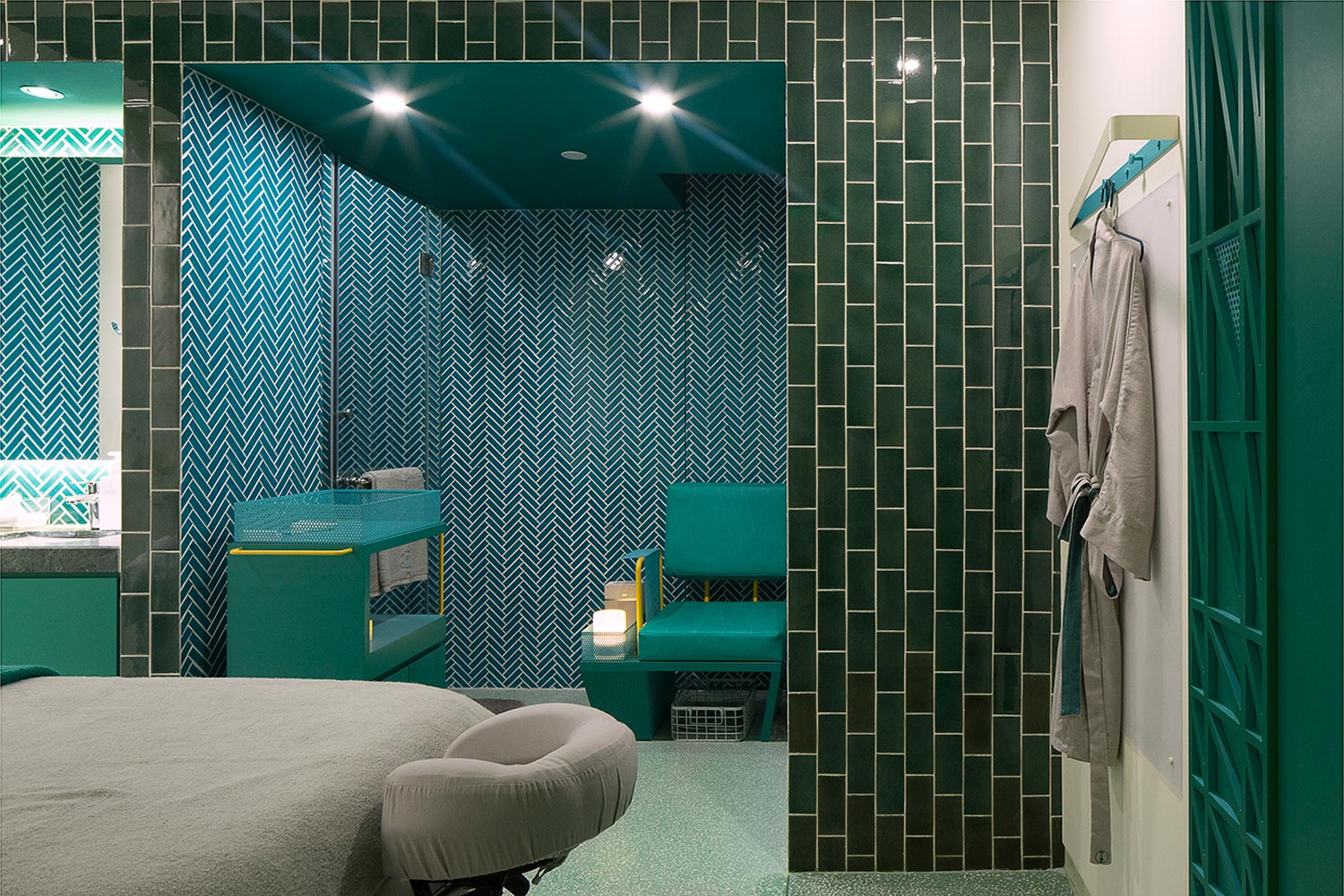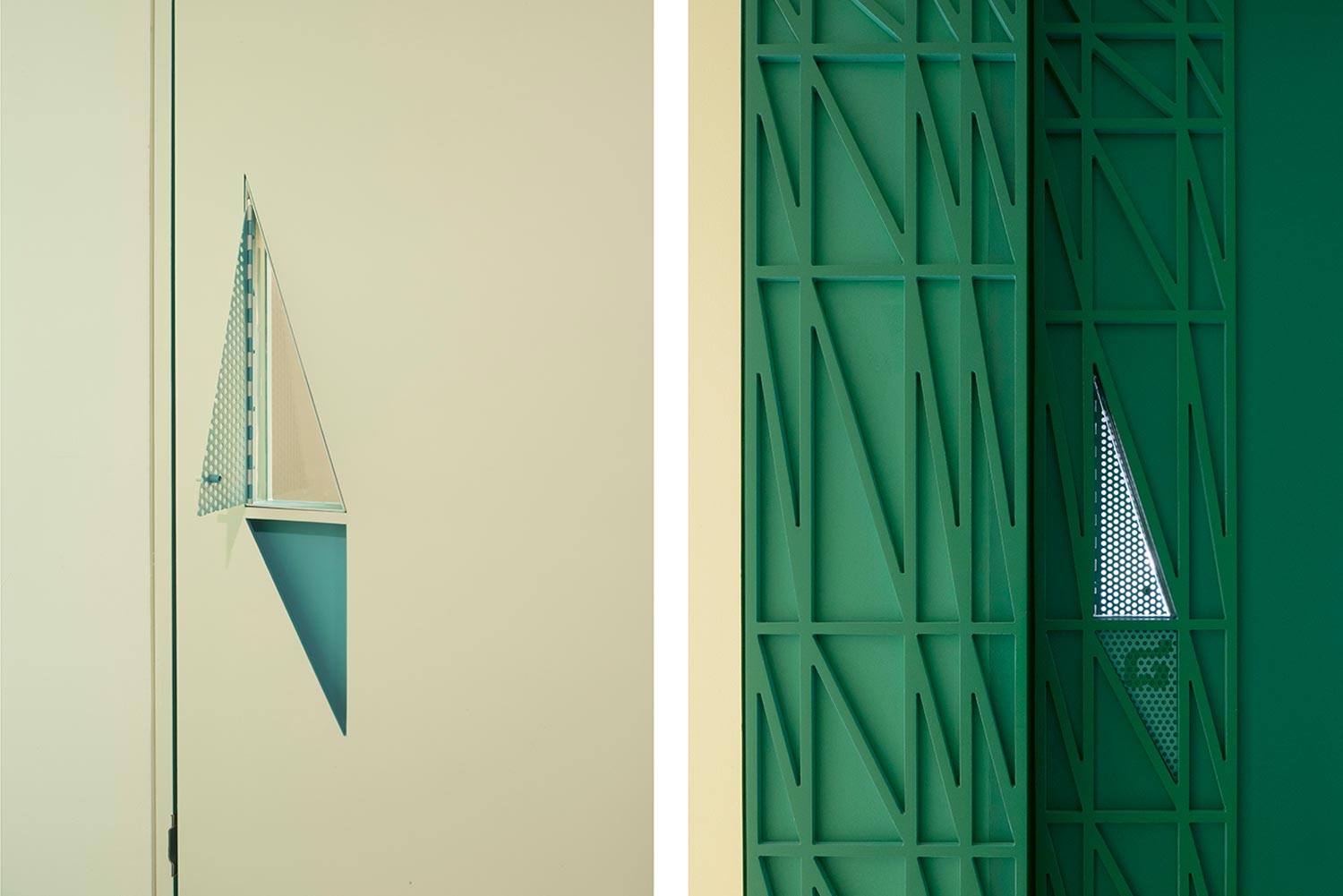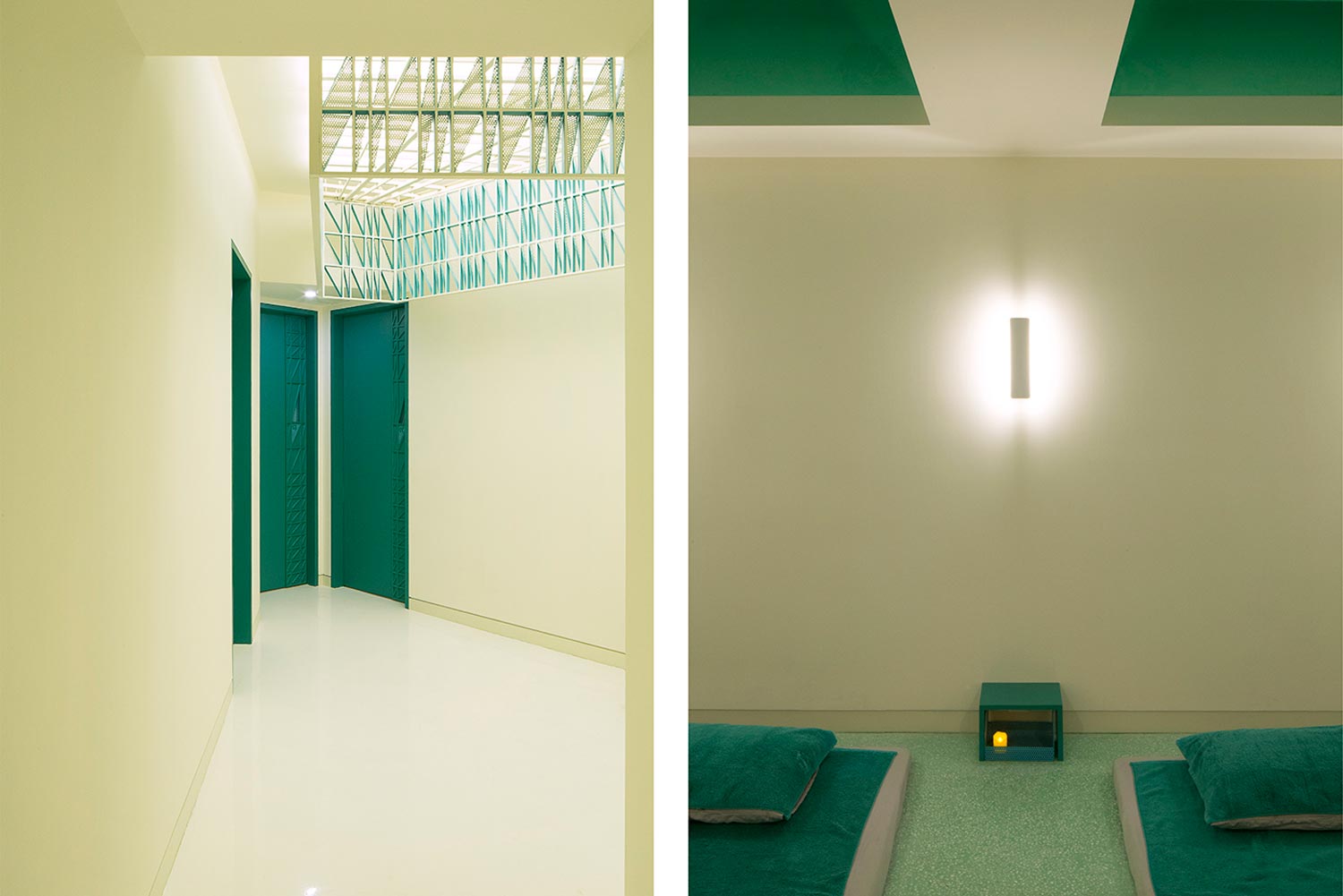Nimman Spa
Maos Design
How do you instil cultural specificity besides transplanting traditional motifs? Inspired by the growing presence of local contemporary design while travelling in the ancient Thai city of Chiangmai, the client wished to create a new Thai spa in Shanghai with a similar vibe for a younger age group, without just resorting to traditional elements. Maos Design identified that this sense of contemporary Thai design is shaped by a backdrop of cultural presence, subtle contemporary appropriations, and lush tropical greens from the region.
Taking this optimistic direction of reinterpreting tradition in a contemporary setting, Maos Design created a pattern to establish an overarching cultural ambience from which objects, furniture and details could evolve and materialise into a total spatial experience. In response to the basement location, the designers adopted white for the transition spaces and shades of green to relate to nature in the various spa spaces. The journey through the venue begins with a white foyer where patterned frameworks hover overhead. The space branches out into a reception, waiting area and corridor leading to various zones. Green pockets of space for shared experiences such as rest, food and foot washing appear.
Further along, a second foyer with similar overhead patterned framework signals the transition into the private zone of various green treatment rooms. Inside the rooms, patterned details meld the interior into one cohesive sensory journey. The experience is both simple and rich, diverse and cohesive, and allows for cultural nuances and contemporary interpretations to exist in harmony.
It is hoped that visitors find themselves in a dialogue between cultural specificity and the contemporary context, between familiarity and surprise. The various manifestations of pattern collectively augment moments of a Thai ambiance without depending on overly loaded traditional motifs. Whether the customer is Thai, Chinese or a foreign traveller who has been to Thailand, there are subtle moments within Nimman that will speak to their own Thai experiences. Finding that resonance at a personal level – feeling welcomed – is ultimately very important for a space in hospitality.
Pattern as a surface is by default often limited to a decorative role. Yet, it often remains the most immediate and prominent way for people to perceive cultural differentiation. Nimman Spa does not reject this strength and provides the initial experiential impact that’s desired, but then pushes the envelope to allow complete architectural manifestations, as the pattern grows into ceiling louvres, partitions, surface treatments, mural art, custom furniture, leather stitching, door and window details, paving, and shades of light and shadow. Overall, clarity is maintained in harmony with the soothing nature of a spa.
Photography: Herman Mao




